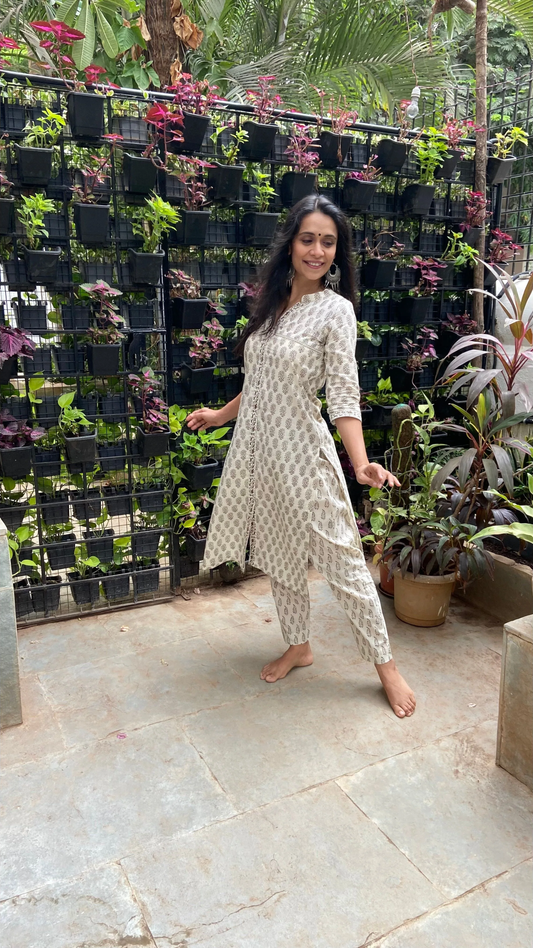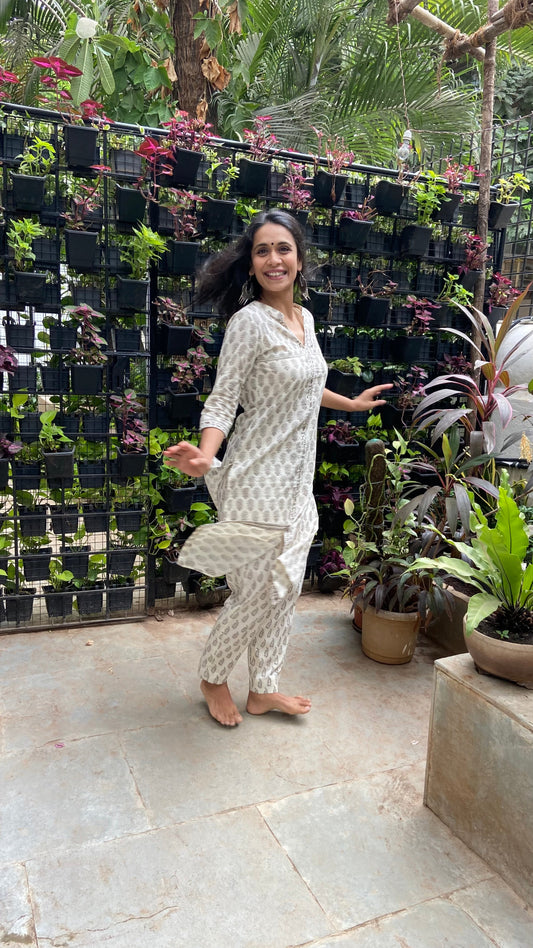
Bagh printing is an ancient and traditional block printing technique hailing from the village of Bagh in Madhya Pradesh, India. The art form has its roots in the Khatri community, where the Chippas were skilled in carving intricate designs onto wooden blocks, which were then used to print onto cloth.
Bagh printing has evolved over time and today, the technique is considered a unique and important part of Madhya Pradesh's cultural heritage. The wooden blocks used in the printing process, known as Bilals, are typically made from dense woods such as Sagwan or Teak and are carved with a variety of tools to create motifs that represent local flora, landscapes, and geometric patterns.

The process of block printing involves several stages, including washing and beating the cloth, dipping it in a solution, and printing with the wooden blocks. The finished product is then boiled in a solution, re-washed, and dried to set the colors. The end result is a beautiful and intricate fabric with designs that evoke various emotions and sentiments.

Today, Bagh printing is sought after not only in India but around the world, due to its eco-friendliness and the comfort it provides to the skin. The use of natural dyes and the slow, meticulous process required to create Bagh prints make it a unique and desirable product in the fashion industry.

Overall, the history of Bagh block printing is a testament to the skills and traditions of the Khatri community, and serves as a reminder of the importance of preserving cultural heritage in the modern world.








